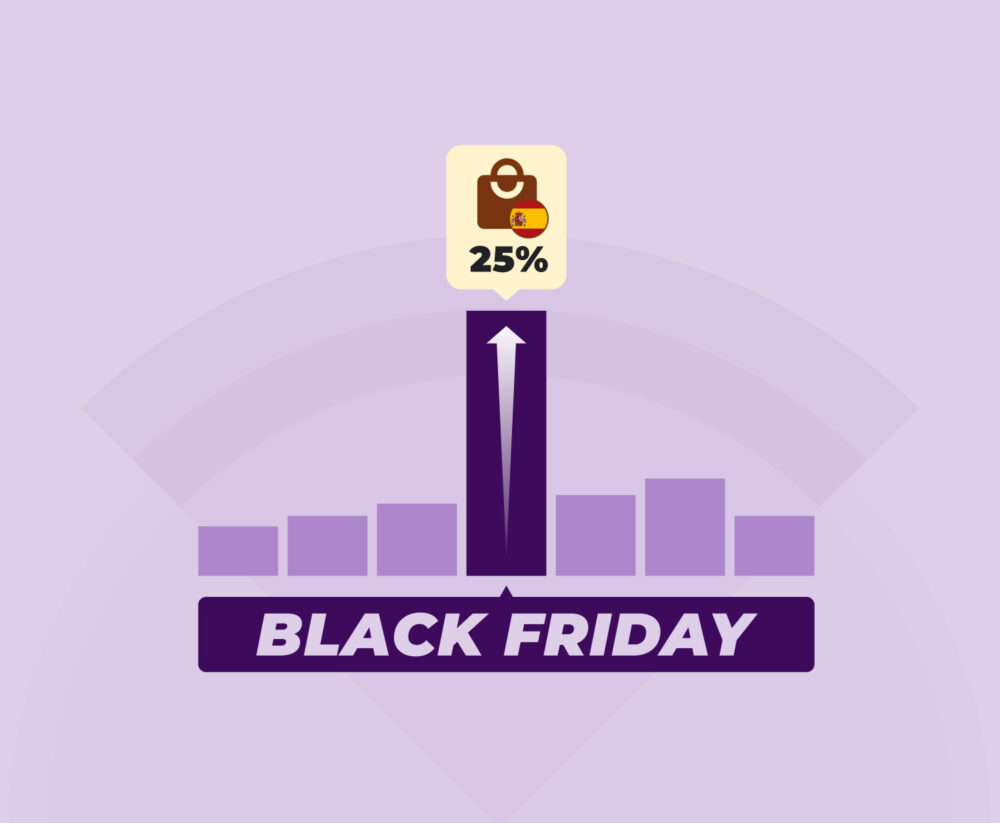20 years of YouTube in Spain: How the Content Creator Economy has Evolved
2025 marks a key milestone: it will be 20 years since YouTube arrived in Spain, forever transforming the way we consume videos, entertainment and educational content. What began as a platform for sharing home videos has established itself as a multi-million-pound business for many Spanish creators.
The platform continues to grow and its impact is undeniable. According to recent data, in January 2025 YouTube surpassed 39.7 million users in Spain. This is equivalent to a penetration of 82.9% of the total population. It also means that its advertising campaigns reach 86% of all Spanish internet users, regardless of their age. The rise in consumption on connected TVs and its established presence in homes have helped the platform to cement its position as a cultural, educational and commercial benchmark in the country.
In this article, we analyse how the creator universe and its figures have evolved, both in Spain and globally, as well as the most innovative trends that YouTube has recently launched to enhance the relationship between brands and creators.
The global rise of content creators
Globally, the creator economy has experienced extraordinary growth in recent years. In 2025, the YouTube platform is home to more than 207 million content creators, including around 45 million professional creators and another 162 million amateurs. However, only 0.96% of these creators reach one million or more followers on their channels. This reflects how competitive and specialised this digital universe is.
Spain is no exception to this phenomenon. It is estimated that there are more than 50,000 active channels with significant audiences and monetisation potential on YouTube in the country alone. In addition, a study by the Spanish Association of Content Creators confirms that only 1,187 people in Spain earn enough income to live exclusively from what they generate on YouTube, while 2,932 creators have more than 100,000 subscribers, putting them on track to exceed the minimum wage.
Sources of income and monetisation on YouTube in Spain
Spanish YouTubers have several complementary monetisation streams, the main ones being:
- Advertising: Pre-roll or mid-roll ads generate income based on views and the audience’s geographical location. In Spain, the average CPM (cost per thousand views) is between €0.40 and €1, although it can be higher in niches such as technology or finance.
- Sponsorships: Brands negotiate directly with creators for integrations within videos, which is often the most lucrative source.
- Merchandising and own products: From selling clothing to digital courses and books, these expand income beyond traditional advertising.
- YouTube Premium: A portion of the payment from subscribers to the platform who consume content without ads also contributes to their earnings.
These sources have allowed a select elite to live exclusively from YouTube. However, the source of income largely depends on the channel’s size, niche, and audience loyalty.
Income comparison for YouTubers in Spain and other countries
One of the main differences between the income of YouTubers in Spain and in other countries, such as the United States, lies in the CPM. The cost per thousand views is much higher in English-speaking markets.
While in Spain the average CPM is around €0.40 to €1 per thousand views, in the United States it can range from $4 to over $34, depending on the advertising sector. In Latin America, countries such as Mexico and Peru have intermediate figures, with an average CPM between $0.48 and $2.
This means that creators who are globally focused and produce content in English, with an international reach, have much greater monetisation potential. Despite this, Spain stands as a solid market with creators who have managed to scale up to seven-figure earnings.
Innovation in collaborations: how YouTube connects brands and creators
Furthermore, YouTube has this year launched the Creator Partnerships Hub, a new, centralised section in Google Ads that aims to make it easier for companies to find and partner with creators whose profiles fit their brands and objectives. This tool not only simplifies the search for suitable YouTubers but will soon integrate artificial intelligence to automatically recommend the profiles that are the best fit for each strategy.
In addition, the platform is enhancing relationships between creators and advertisers through international industry events and by strengthening its commercial teams to secure more relevant collaborations.
YouTube Shopping and Artificial Intelligence: new revenue streams for creators
As of mid-2025, the YouTube Shopping programme already has more than half a million creators enrolled worldwide. This system stands out for allowing YouTubers to promote their own or third-party products via the platform. And its growth has been accelerated by the incorporation of artificial intelligence, which automatically identifies the optimal moment within videos to display product tags and capture the audience’s attention at the most relevant instant.
Furthermore, in recent months YouTube has begun to expand access to Shopping for creators in more markets, especially in Brazil and Korea. And has added major international brands such as Nike, Etsy and Best Buy to the programme.
The future of YouTube in Spain and the new challenges for creators
The 20 years of YouTube in Spain have brought about a cultural and economic revolution. From being a platform for home videos, it has evolved into an ecosystem where thousands of creators build professional careers, and a few achieve seven-figure incomes and follower counts.
Although the majority of creators do not reach the top tier, the platform remains a window of opportunity for new talent who, with perseverance, innovation and passion, can add their voice to an expanding market.






